 October 8, 2020 John E. Ross, KD8IDJ, Editor
| ||||||
FCC Orders Amateur Access to 3.5 GHz Band to "Sunset" Despite vigorous and continuing opposition from ARRL and others, the FCC has ordered the "sunsetting" of the 3.3 - 3.5 GHz amateur radio secondary spectrum allocation. The decision allows current amateur activity on the band to continue, "grandfathering" the amateur operations subject to a later decision. The FCC proposed two deadlines for amateur operations to cease on the band. The first would apply to the 3.4 - 3.5 GHz segment, the second to 3.3 - 3.4 GHz. The FCC will establish the dates once it reviews additional comments. "We adopt our proposal from the Notice of Proposed Rulemaking to remove the amateur allocation from the 3.3 - 3.5 GHz band," the FCC said in its Report and Order. "[W]e adopt changes to our rules today that provide for the sunset of the secondary amateur allocation in the band, but allow continued use of the band for amateur operations, pending resolution of the issues raised in the Further Notice." The Report and Order (R&O) and Further Notice of Proposed Rulemaking in WT Docket No. 19-348 adopted on September 30
followed a 2019 FCC Notice of Proposed Rulemaking (NPRM) in which the FCC proposed re-allocating 3.45 - 3.55 GHz for "flexible-use service" and auctioning the desirable "mid-band" spectrum (generally defined as between 1 GHz and 6 GHz) to 5G providers. These and other recent spectrum-repurposing actions stem from the MOBILE NOW Act, enacted in 2018, in which Congress directed the Commission to make additional spectrum available to auction for mobile and fixed wireless broadband. In the run-up to the Commission's decision, ARRL met with the FCC's professional staff to explain its concerns and to answer questions. In subsequent meetings with the wireless advisors to the FCC Chairman and two Commissioners, ARRL reiterated that continued secondary status for amateurs will not impair or devalue use of this spectrum by primary licensees intending to provide 5G or other service. ARRL noted amateur radio's long history of successful coexistence with primary users of the 9-centimeter band, sharing this spectrum with the federal government users and secondary, non-federal occupants. ARRL pointed out that vital links in amateur television and amateur radio high-speed mesh networks using the band have been especially valuable during such emergency situations as the wildfires currently raging on the west coast. Deleting the amateur secondary allocation will result in lost opportunities for experimentation and public service with no countervailing public interest benefit, ARRL said. The FCC action means that amateur radio will lose access to the 3.5 GHz secondary allocation even where commercial operations do not exist. ARRL has argued that amateur operations should be permitted until and unless an actual potential for interference exists. Deletion of the 3.3 - 3.5 GHz secondary amateur allocation will become effective on the effective date of the FCC's order, but amateur radio operation as of that date may continue while the FCC finalizes rules to license spectrum in the 3.45 - 3.55 GHz band and establishes deadlines for amateur operations to cease. Read more. ARRL National Convention and Orlando HamCation® Postponed to February 2022 ARRL and the Orlando Amateur Radio Club (OARC) have announced that the ARRL National Convention and Orlando HamCation® -- which was to host the convention -- have been postponed until February 10 - 13, 2022. The convention had been set for next February. "The joint decision came after considering the national public health emergency including the health and safety of all participants, the uncertainty that continues to impact our organizations, and the "While postponing was a difficult decision, our top priority is delivering a safe and successful HamCation experience for everyone, including our attendees, dedicated volunteers, exhibitors, and service partners," said HamCation General Chairman Michael Cauley, W4MCA. OARC President John Knott, N4JTK, noted that holding the convention in 2022 will mark the 75th anniversary of HamCation -- one of the largest annually held gatherings of radio amateurs in the US. The published gate figure for 2020 was 24,200 for all 3 days. "We want our diamond anniversary show to be an exciting, five-star event," said Knott. "We look forward to seeing you in Orlando in 2022, and hope that you and your loved ones remain safe in the months to come." A full day of National Convention programming and training sessions was previously scheduled to precede HamCation. That will be rescheduled for Thursday, February 10, 2022. HamCation will host the rest of the convention on Friday, Saturday, and Sunday, February 11 -13, 2022 at the Central Florida Fairgrounds & Expo Park in Orlando. Cauley said HamCation may organize some online presentations and programs for what would have been HamCation 2021 next February. A QSO party is also under consideration. The HamCation website will soon post details, including information for anyone seeking refunds and other options for pre-purchased tickets and exhibit space. You can follow HamCation on Facebook, Twitter, and Instagram. Further details and any changes will be shared via the 2022 ARRL National Convention and Orlando HamCation websites. Hurricane Delta Prompts Net Activations The Hurricane Watch Net (HWN), WX4NHC at the National Hurricane Center (NHC), The Salvation Army's SATERN, and the Louisiana "Hurricane Delta continues to advance on the Gulf Coasts of Texas, Louisiana, Mississippi, and Alabama," said ARRL Emergency Management Director Paul Gilbert, KE5ZW. "It is following mostly the same track that Hurricane Laura did." The NHC forecast Delta to become a Category 3 storm before making landfall in the early evening of Friday, October 9, near Vermilion Bay, Louisiana. The NHC predicted hurricane conditions and life-threatening storm surge to begin along portions of the northern Gulf Coast on Friday. FEMA has announced that Channels 1 and 2 of the 60-meter (5-MHz) band will be available, as necessary, starting on October 9, for interoperability between US Government stations and US amateur radio stations involved in Hurricane Delta emergency communication. The interoperability status will remain active until after the storm has passed, and the need for these channels no longer exists. These frequencies will be used: Channel 1 -- primary voice traffic, 5332 kHz channel center, 5330.5 kHz USB voice; Channel 2 -- digital traffic, 5348 kHz channel center, 5346.5 kHz USB with 1.5 kHz offset to center of digital waveform. Stations should yield to operational traffic related to Hurricane Delta. Although the intended use for these channels is interoperability between federal government stations and licensed US amateur radio stations, federal government stations are primary users and amateurs are secondary users. Gilbert pointed out that the region is still recovering from Hurricane Laura. "As a result, many of the regular Louisiana net control operators and stations are still not operational, or may be placed in mandatory evacuations," he said. Plans call for activating the Louisiana ARES HF Net at mid-day on Friday on 7.255 MHz ±10 kHz during daylight hours The HWN suspended operations at 1800 UTC on October 7, but plans to resume operations on Friday at 1200 UTC on 14.325 MHz. WX4NHC has been active on both HWN frequencies, as well as on the VoIP Hurricane Net, requesting surface reports from stations in the affected area "with or without weather data for use by NHC forecasters," Assistant WXNHC Coordinator Julio Ripoll, WD4R, said. WX4NHC also has an online Hurricane Report Form. "NHC appreciates all the surface reports from the affected area during hurricanes as they fill in gaps of not just weather data, but also give a real-time, first-person perspective of what is actually happening on the ground," Ripoll said. The International SATERN SSB Net (14.265 MHz, alternate 14.312 MHz) and the Southern Territory SATERN SSB Net (7.265 MHz) plan to activate Thursday through Saturday. ARRL Podcasts Schedule
The On the Air and Eclectic Tech podcasts are sponsored by Icom. Both podcasts are available on iTunes (iOS) and Stitcher (Android), as well as on Blubrry -- On the Air | Eclectic Tech. ARISS to Celebrate 20 Years of Ham Radio on the International Space Station Amateur Radio on the International Space Station (ARISS) will soon celebrate 20 years of continuous ham radio operations on the International Space Station (ISS). NASA is commemorating the milestone with a newly produced infographic highlighting the
educational contacts via amateur radio between astronaut crew members aboard the ISS and students. Over its 20 years, ARISS has supported nearly 1,400 scheduled ham radio contacts with schools, student groups, and other organizations. Planning for ARISS began in 1996 as a cooperative venture among national amateur radio and amateur satellite societies, with support from their respective space agencies. The ARISS ham radio gear actually arrived on the station before the Expedition 1 crew, headed by Commander Bill Shepherd, ex-KD5GSL. The FCC issued ham radio call sign NA1SS for ISS operations. After Expedition 1 arrived on station, some initial tests with ARISS ham radio ground stations and individual hams confirmed the ham gear was working properly. The first ARISS school contact was made with students at Luther Burbank Elementary School in Illinois on December 21, 2000, with Shepherd at the helm of NA1SS on the ISS. NASA produced a video of students talking with astronaut Chris Cassidy, KF5KDR, during an ARISS contact in May 2020. Before and during scheduled ham radio contacts, students, educators, parents, and communities learn about space and related technologies, and radio communication using amateur radio. ARISS relies on a large network of amateur radio operator volunteers, many associated with radio clubs in the communities where students and groups participating in the contact reside. ARISS volunteers support satellite ground stations, serve as technical mentors, and provide additional help in the areas of education, community outreach, and public relations. While student-to-astronaut radio contacts are a primary objective for ARISS, the capability has also inspired further experimentation for amateur radio in space and the evaluation of new technologies. In September, ARISS announced that the initial element of its next-generation ham radio system had been installed in the ISS Columbus module. The new radio system replaces equipment originally certified for spaceflight in mid-2000. The onboard ham station also provides a contingency communications system for the ISS crew. Several astronauts have also enjoyed using NA1SS to make casual contacts with -- and delighting -- earthbound members of the ham radio community. In the US, ARISS sponsors include ARRL, AMSAT, and NASA, the ISS National Lab-Space Station Explorers, and NASA's Space Communications and Navigation program.
The next proposal window for US schools and educational organizations to host an amateur radio contact with a crew member on board the ISS opened on October 1 for contacts that would take place from July through December 2021. Proposal information and more details, including expectations, proposal guidelines, and proposal forms, and dates and times of informational webinars, are on the ARISS website. Send questions to ariss.us.education@gmail.com. Like many educators who have coordinated ARISS radio contacts for their students, teacher Rita Wright, KC9CDL, an ARRL member, described the first ARISS school contact as inspirational and having a lasting impact on their community. Five months after their contact, nearly 500 students greeted Bill Shepherd when he visited Luther Burbank School. Wright said it was "like tossing a pebble into a stream." "The ripple effects are still occurring, and I suspect will continue to occur for a long time," she said. Read more. IARU Region 2 Releases 2020 Revision of its Band Plan IARU Region 2 (IARU R2) -- the Americas -- has released the September 2020 revision of its Band Plan and made procedural changes to shorten the time to reflect future adjustments. The Band Plan includes a change approved at the October 2019 General Assembly to add an Amateur Satellite uplink subband, 21.125 to 21.450 MHz, on a non-exclusive basis. This matches similar changes in the Region 1 and Region 3 band plans.
At its May 2020 meeting, the IARU R2 Executive Committee added text to the Standard Operating Procedures that provides a process for the Band Plan to be updated in a more timely manner. Prior to this change, Band Plan modifications could only be approved at a General Assembly, held once every 3 years. Under the new provision, the Band Planning Committee may circulate proposed changes to member-societies with the approval of the Executive Committee. "Should no more than one objection be received within a 60-day period, the change shall be deemed accepted and reported as such at the next conference," the Band Planning Committee's terms of references state. The IARU R2 Band Planning Committee has a member from each of the seven areas in Region 2, and one of those members also serves as the committee's chair. The current Committee Chair is Alphonse Penney, VO1NO/VA1AVR. -- Thanks to IARU Region 2 Secretary George Gorsline, VE3YV The K7RA Solar Update Tad Cook, K7RA, Seattle, reports: Geomagnetic activity quieted over the October 1 - 7 reporting week. Compared to the previous 7 days, average daily mid-latitude A index declined from 15.6 to 6, and average planetary A index slipped from 22 to 7.1.
Predicted solar flux over the next 45 days is 71 on October 8 - 15; 70 on October 16 - 18; 72 on October 19 - 31; 70 on November 1 - 14, and 72 on November 15 - 21. Predicted planetary A index is 5 on October 8 -- 19, then 10, 18, 20 and 24 on October 20 -- 23, then 16, 38 and 38 on October 24 -- 26, then 26, 15 and 10 on October 27 -- 29, then 5 on October 30 through November 6, 10 on November 7, 5 on November 8 -- 15, then 10, 18, 20 and 24 on November 16 -- 19, and 16 on November 20 -- 21. Sunspot numbers for October 1 - 7 were 0, 0, 0, 0, 0, 0, and 0, with a mean of 0. The 10.7-centimeter flux was 72.8, 72.2, 71.8, 71.2, 72.3, 71.7, and 70.7, with a mean of 71.8. Estimated planetary A indices were 11, 9, 6, 4, 8, 7, and 5, with a mean of 7.1. Middle latitude A index was 11, 6, 5, 3, 7, 6, and 4, with a mean of 6. A comprehensive K7RA Solar Update is posted Fridays on the ARRL website. For more information concerning radio propagation, visit the ARRL Technical Information Service, read "What the Numbers Mean...," and check out K9LA's Propagation Page. A propagation bulletin archive is available. For customizable propagation charts, visit the VOACAP Online for Ham Radio website. Share your reports and observations. Just Ahead in Radiosport
British Columbia Radio Amateur Hears Mars Reconnaissance Orbiter According to a Spaceweather.com report, Scott Tilley, VE7TIL, in British Columbia, Canada, received a signal from the NASA Mars Reconnaissance Orbiter (MRO), flying just 274 kilometers (about 170 miles) above the red planet's surface. The signal was an X-band carrier containing no data or telemetry. "Its purpose is to allow for Doppler tracking," Tilley explained. "The rapid change in pitch of the signal is caused by the relative motion of the satellite and the observer." He used a homemade satellite dish to hear the orbiter.
Tilley enjoys tracking down signals from "dead" satellites, zombie satellites, and spy satellites, but the MRO was a first for him. "MRO's signal is weak, but it is one of the louder signals in Mars orbit," he said. "The spacecraft has a large dish antenna it uses as a relay for other Mars missions. With the proximity of Mars these days, it was the perfect time to try." In 2018, Tilley saw the "signature" of the Imager for Magnetopause-to-Aurora Global Exploration (IMAGE), a NASA spacecraft believed to have died in 2005. That discovery delighted space scientists. Announcements
Solar Physicist Predicts a Slightly Better Solar Cycle 25 Solar physicist Leif Svalgaard of the W.W. Hansen Experimental Physics Laboratory at Stanford University has predicted a maximum sunspot number of 128 ±10, slightly better than Solar Cycle 24. "The overall average is 132 ±47 (median 124)," he said. "None of these numbers are substantially different, so one could perhaps just go
with the 'wisdom of the crowd.' All predictions that we consider have the underlying assumption that the sun has not changed its behavior (its 'spots,' so to speak) on a timescale of a few centuries (the Maunder Minimum may be a possible violation of that assumption), and that there will be no such changes in the near future, in spite of speculative suggestions." Those included one of his own in 2013. Svalgaard characterized the science of solar cycle prediction to be still in its infancy, "borne out by the extreme range of predictions of Cycle 25." -- Thanks to Frank Donovan, W3LPL New England ARES Academy Set The first-ever New England ARES Academy, originally scheduled for the ARRL New England Division Convention at the Northeast HamXposition in November, will instead take place October 13 - 31 via the Zoom conferencing platform. The presentations are available to all, Five basic-track classes will aim at those just getting started in ARES, and more advanced classes and workshops will target those already familiar with the basics. Hour-long classes will be held on weeknights starting at 7:30 PM EDT (2330 UTC), and 2-hour workshop sessions will be held Saturday mornings from 9:00 to 11:00 AM EDT (1300 - 1500 UTC). Topics covered include:
Participants will be able to ask questions and interact with instructors via chat. Other New England HamXposition events just ahead include the HamXposition Virtual Banquet (November 7), Ham Bootcamp (November 7), and the W1A special event (November 6 - 8). Attendance for all events is free. Upcoming ARRL Section, State, and Division Conventions Note: Many conventions and hamfests have been canceled or postponed due to the coronavirus pandemic. Check the calendar of canceled events on the ARRL website.
Find conventions and hamfests in your area. ARRL -- Your One-Stop Resource for . .
Subscribe to...
Free of charge to ARRL members...
| ||||||
.jpg)
.jpg) reluctance to travel to, and attend, large events," said ARRL CEO David Minster, NA2AA. "We regret the disruption to the hard work already completed by so many volunteers preparing for the ARRL National Convention and HamCation."
reluctance to travel to, and attend, large events," said ARRL CEO David Minster, NA2AA. "We regret the disruption to the hard work already completed by so many volunteers preparing for the ARRL National Convention and HamCation."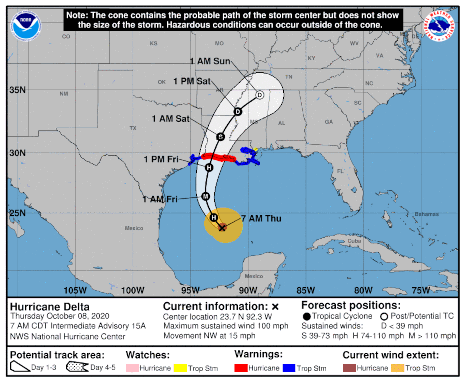 Amateur Radio Emergency Service (ARES) HF Net -- with support from the ARRL Delta Division and the Arkansas Section -- announced activations on October 7 for Hurricane Delta. The HWN has activated on 14.325 MHz. WX4NHC monitors the same frequency to gather "ground truth" reports from radio amateurs that may assist NHC forecasters.
Amateur Radio Emergency Service (ARES) HF Net -- with support from the ARRL Delta Division and the Arkansas Section -- announced activations on October 7 for Hurricane Delta. The HWN has activated on 14.325 MHz. WX4NHC monitors the same frequency to gather "ground truth" reports from radio amateurs that may assist NHC forecasters.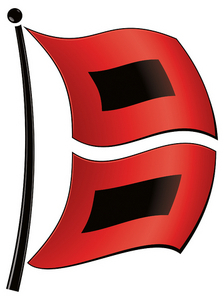 and on 3.878 MHz (±3 kHz) at night.
and on 3.878 MHz (±3 kHz) at night..jpg) The latest episode of the On The Air podcast (Episode 10) will include an interview with ARRL Lifelong Learning Manager Kris Bickell, K1BIC, about ARRL's new "Learning Network" webinars.
The latest episode of the On The Air podcast (Episode 10) will include an interview with ARRL Lifelong Learning Manager Kris Bickell, K1BIC, about ARRL's new "Learning Network" webinars..jpg) The latest edition of the Eclectic Tech podcast (Episode 18) features discussions of a revolutionary new RF-shielding material; storing software in the Arctic, and the importance of fan cooling with Al Rabassa, NW2M.
The latest edition of the Eclectic Tech podcast (Episode 18) features discussions of a revolutionary new RF-shielding material; storing software in the Arctic, and the importance of fan cooling with Al Rabassa, NW2M.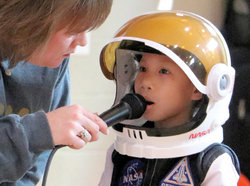
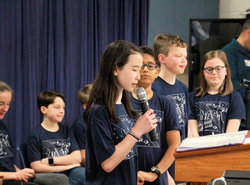
.JPG) A number of administrative changes have been made to the text, although the Band Plan itself has not been modified. These changes include:
A number of administrative changes have been made to the text, although the Band Plan itself has not been modified. These changes include: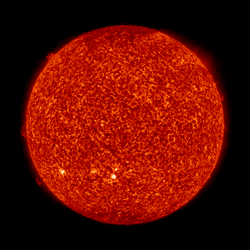 There were no sunspots this week and only one in the previous 7 days. Average daily solar flux went from 73.4 to 71.8.
There were no sunspots this week and only one in the previous 7 days. Average daily solar flux went from 73.4 to 71.8.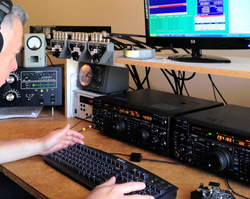 October 10 - 11 -- Nevada QSO Party (CW, phone)
October 10 - 11 -- Nevada QSO Party (CW, phone).jpg)
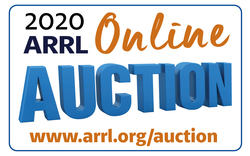 starting at 10 AM EDT (1400 UTC) on Thursday, October 15. The Auction is sponsored by GigaParts. You may browse the without being a registered bidder; register on the ARRL Online Auction website anytime during the auction. Auction proceeds benefit ARRL education programs, including activities to license new hams, strengthen Amateur Radio Emergency Service (ARES) training, offer continuing technical and operating education, and create instructional materials.
starting at 10 AM EDT (1400 UTC) on Thursday, October 15. The Auction is sponsored by GigaParts. You may browse the without being a registered bidder; register on the ARRL Online Auction website anytime during the auction. Auction proceeds benefit ARRL education programs, including activities to license new hams, strengthen Amateur Radio Emergency Service (ARES) training, offer continuing technical and operating education, and create instructional materials. The call sign HS10A was granted on September 24 to Thailand's King Vajiralongkorn. National telecoms regulator NBTC and RAST, the national amateur radio society, presented the Advanced-class license and amateur radio equipment -- including HF and VHF/UHF transceivers, antennas, and peripherals.
The call sign HS10A was granted on September 24 to Thailand's King Vajiralongkorn. National telecoms regulator NBTC and RAST, the national amateur radio society, presented the Advanced-class license and amateur radio equipment -- including HF and VHF/UHF transceivers, antennas, and peripherals.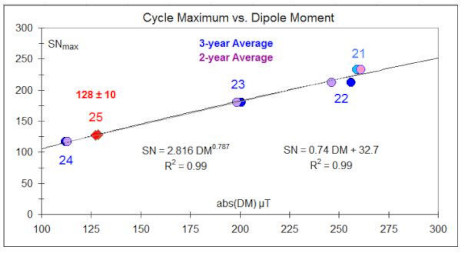
.jpg) and the Zoom URL will be sent to all who register via the New England ARES Academy web page.
and the Zoom URL will be sent to all who register via the New England ARES Academy web page.







